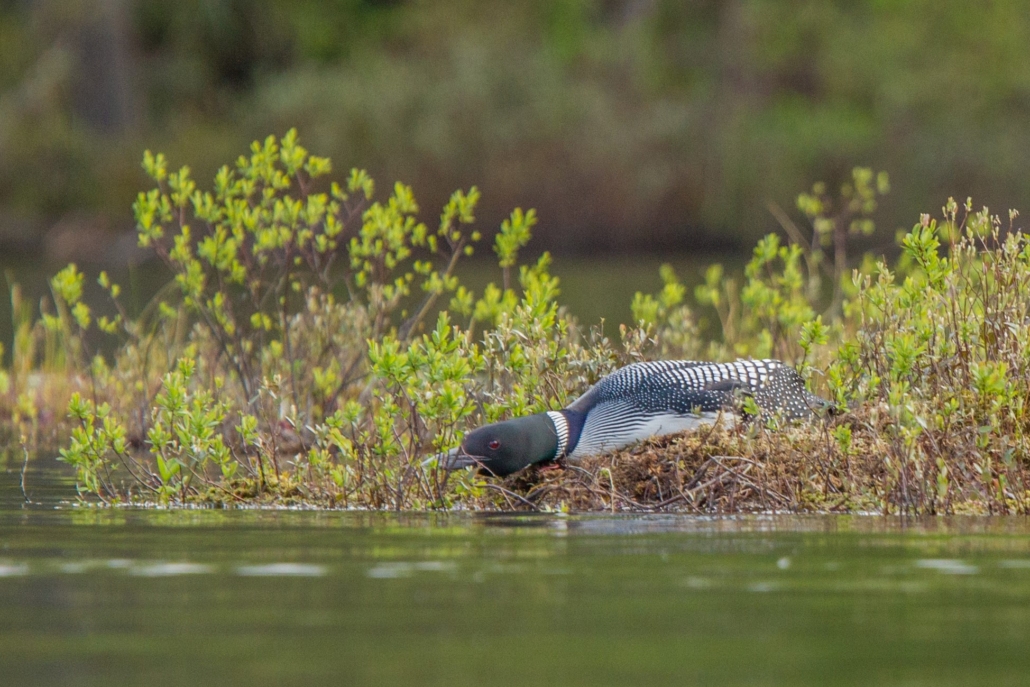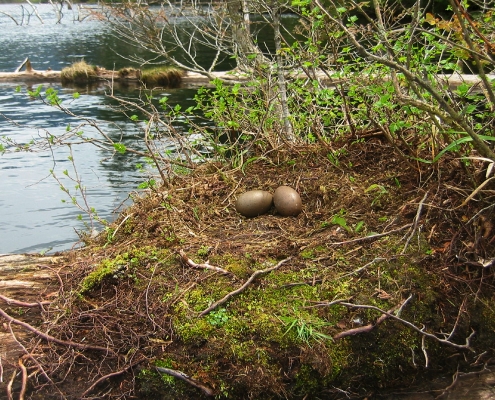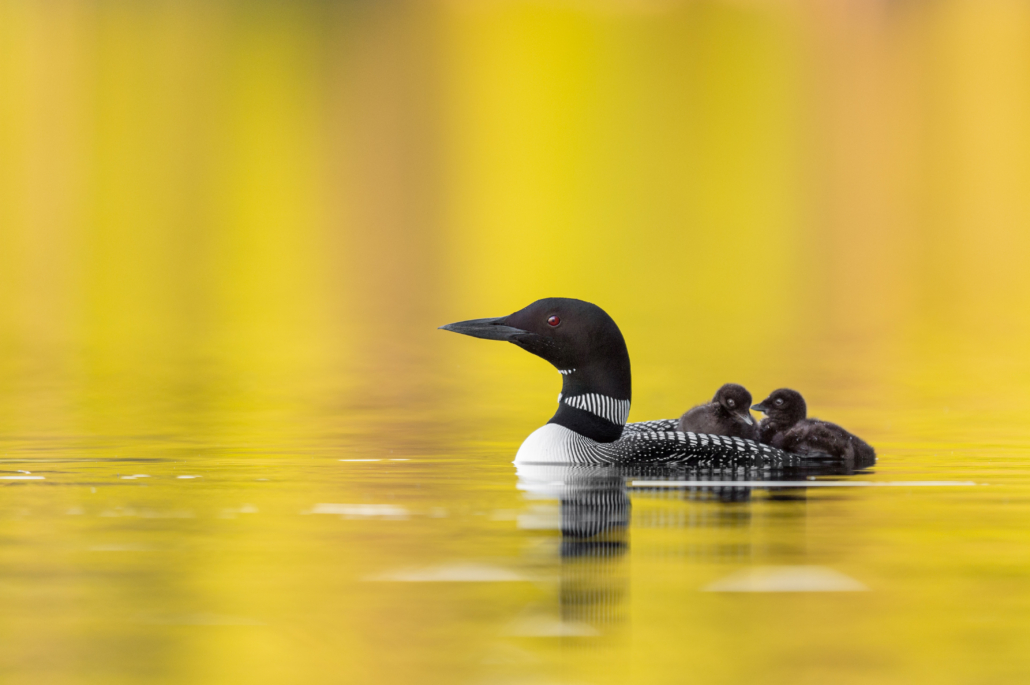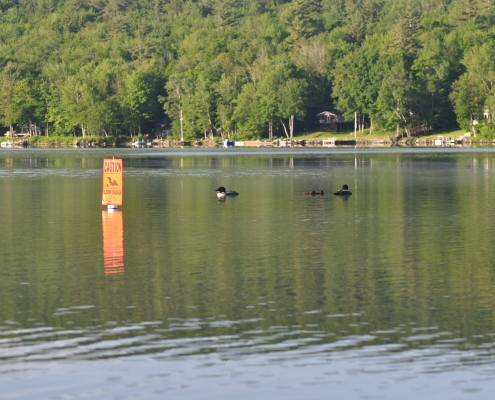Boating around Loon Nests
If you see a loon nest, give it plenty of space—we recommend a distance of 150 feet or more, when possible.
Loons’ bodies are designed for life in the water, and as a result, they cannot walk well on land. When on land to nest, a loon’s lack of mobility makes it vulnerable to predators and other threats. When nesting loons feel threatened by something (such as a closely approaching boat), their instinct is to get back into the water, where they are more mobile and less at risk. When closely approached by a boat, loons typically assume the head-down position shown in the photo at right, flattening their bodies over the nest and angling their heads towards the water. A loon in this position is hoping to avoid being seen. It is in distress and on the verge of flushing off of the nest, leaving its eggs exposed and vulnerable to predators or the elements (overheating or chilling). If you see a loon in this position, it needs space—back away slowly until the loon raises its head and resumes a more relaxed position.
Loons in this position (flattened over the nest) are feeling threatened and should be given more space.
If you accidentally flush a loon off of its nest, leave the area immediately.
Often times, if a perceived threat leaves the area quickly, a loon that has flushed from the nest will calm down and resume incubation. The longer a boat remains in the area after flushing a loon from the nest, the longer the eggs will sit unattended and vulnerable, and the greater the chance that the loons will abandon their nest permanently.
Avoid creating a wake in areas where loons are likely to be nesting.
Because they cannot walk well on land, loons build their nests very close to the water’s edge. These nests are vulnerable to swamping from boat wakes. Eggs may be chilled if the nest is inundated with water. They may also be swept completely out of the nest. Loon nesting platforms can be rocked by boat wakes, which can cause a nest failure if eggs are displaced. To avoid harming a loon nest, please follow established no-wake rules (avoid creating a wake within 150 feet of any shorelines) and be especially careful in areas where loons are known to nest (islands, marshy areas, and stream openings).
Boating around Loons on the Water
Give loons on the water plenty of space—ideally 150 feet or more. This is especially important when they have chicks.
Loons need to focus on performing the behaviors that allow them to maintain their own body condition (feeding, preening, bathing) and that help to ensure their chicks’ survival (feeding chicks, watching for overhead and underwater predators). When they are closely approached or pursued by boats, adult loons shift their focus towards getting away from this potential threat, and in that time they are distracted from taking care of themselves and their chicks. This can lead to reductions in both adult fitness and chick survival. Both motor boats and self-powered boats (kayaks, canoes, paddleboards, etc.) can disturb and negatively impact loon families.
If a loon swims away from you on the water, do not pursue it.
Swimming away is one of the first things that a loon will do to let us know that it is concerned about how close we are. If we pursue a loon that is moving away from us, it will continue to try to evade us. This distracts the loon from performing the normal behaviors that it needs to perform in order to keep itself and its chicks healthy (fishing, preening, bathing, feeding chicks, watching for predators, etc.).
Boat cautiously in areas where you see loons or in areas marked by LPC‘s ’Caution: Loon Chicks’ signs.
The Loon Preservation Committee has documented both adult and chick deaths from boat and jet ski collisions. Loon chicks are particularly vulnerable to collisions beacuse they are more buoyant, and therefore less able to dive to escape boats. If you are boating in an area where there are loons, especially if they have chicks, reducing your speed and remaining alert can help to prevent loon deaths from collisions.






